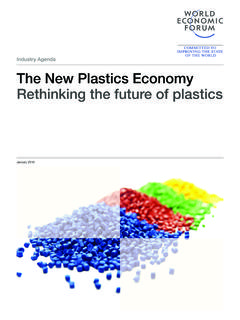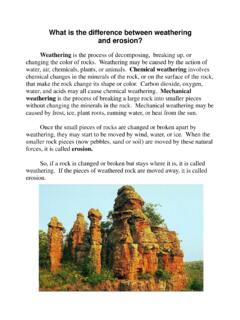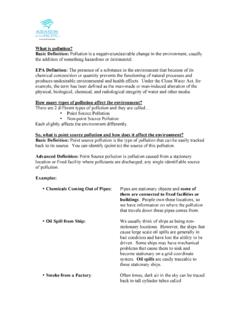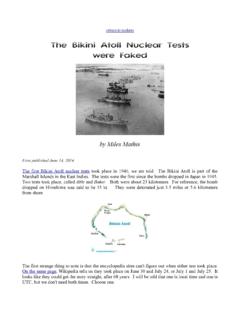Transcription of Impacts of Waste on the Environment - Cabonne Council
1 Impacts of Waste on the EnvironmentThe growing amount of Waste produced in modern society has a huge impact on the Environment . Many of the materials disposed of in the general Waste bin can last in the Environment anywhere from hundreds to thousands of years. The existence of this Waste in the natural Environment can cause significant Impacts on plants, animals and PollutionIf a landfill site is not properly sealed, a toxic pollutant known as leachate can escape into the surrounding groundwater causing environmental problems for plants and animals living downstream. Leachate is a liquid pollutant caused by Waste breaking down that contains high levels of heavy metals, chemical compounds, pesticides and solvents which filter down into the bottom of a landfill site.
2 Many modern landfills created today have a sealed barrier to prevent liquid pollution from entering groundwater, however the growing level of Waste generation can increase the risk of leachate pollution. LitterLightweight materials like plastic bags and film (such as lolly/chip wrappers) can easily be dispersed from rubbish bins and landfill into the surrounding Environment by the wind and rain. Much of this lightweight material presents a range of hazards for wildlife and domestic animals who can become entangled or choke if they accidentally mistake litter for food. The chemical composition of plastic means that it takes a substantial period of time to break down in the Environment , and is capable of travelling long distances without decomposing.
3 Around 80% of plastic litter found in the ocean has travelled there from inland waterways. Oceanic currents have directed much of this material to a litter-made island in the mid Atlantic Ocean called the Great Pacific Garbage Patch. Items as large as computer monitors and tyres, as well as plastic twine, bottles and other material have been found here from across the world. Loss of BiodiversityDemand for new landfill sites results in the clearing of large amounts of vegetation and alterations to the natural Environment . This can displace hundreds and thousands of species (both plants and animals) which live in the surrounding habitat. Over time, excessive land clearing can result in the extinction of many of these species, and a significant loss of biodiversity.
4 PestsOnce the natural habitat has been removed by land clearing, many native species may no longer be able to compete with non-native species such as weeds, vermin, flies and rats. Unlike native species, these pests can often live on a vast variety of food sources and are better adapted to live on these landfill sites. As a result, foreign species such as rats, ibis, feral cats and dogs thrive in landfill areas on rotting food can you do?Land is a precious commodity and by reducing the amount of Waste we produce, reusing items more than once and recycling items correctly we can avoid the creation of more landfill sites and help maintain our unique Environment . By recycling and removing all food and garden Waste from our red-lidded general Waste bin, landfill sites can be maintained for longer, helping to reduce biodiversity loss, save valuable space and reduce the amount of pests in our ecosystems.





